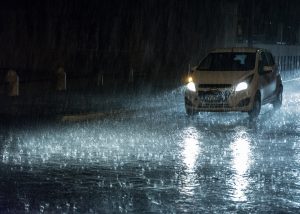8 Safety Tips For Driving In The Rain
-

From driving across the Flat Bridge to dodging potholes filled with water, getting to your destination on wet and slippery Jamaican roads can be tricky. Here are eight safety tips for driving safely in the rain.
1. Don’t Make Haste If You Can Wait
Flooded roads can occur without warning even in moderate rainfall, so if you are able to delay your travel, do so!
2. Check Before You Go
Your windshield wipers, taillights, headlights and car tyres each play important roles in keeping you safe during a downpour, so be sure to inspect these before you head out.
3. Don’t Rush
Did you know… vehicles react more slowly on wet roads? Protect other road users and yourself by obeying the speed limit and driving much slower than you usually would.
4. Turn Your Lights On
Improving the visibility of your vehicle to others is good driving practice on rainy days, so turn on your headlights in rainy or foggy weather even in the day. Using the headlights will also allow you to see more clearly when visibility is poor.
5. Keep a Safe Distance
Defensive driving is important in a rainstorm. Vehicles often skid after braking on wet roads. To minimize risk to your passengers, yourself and other road users keep a generous distance between your vehicle and other road users to prevent collisions.
6. Use Your Brakes Carefully!
Keep your focus on both gas and braking by avoiding auto-controls like ‘cruise control’. Monitor your speed and practice slowing down earlier than usual.
7. Be Conscious of Standing Water
Hydroplaning can occur when driving through standing water which can cause your vehicle to lose traction and skid across the road’s surface. To avoid this, change lanes or drive around areas where water has accumulated. If you do experience hydroplaning, take your foot off the accelerator slowly and steer in the direction you want the front of your car to go. Avoid sharp turns and do not hit the brakes.
8. Pull Over!
If visibility gets too poor to see ahead, or the windscreen is fogging up, pull off the road and park at a suitable stopping area. Put on your hazard lights and wait for visibility to improve.

